Volatility and extreme values
Quantitative Risk Management in Python

Jamsheed Shorish
Computational Economist
Chow test assumptions
- Chow test: identify statistical significance of possible structural break
- Requires: pre-specified point of structural break
- Requires: linear relation (e.g. factor model) $$ \log(\text{Population}_t) = \alpha + \beta * \text{Year}_t + u_t $$
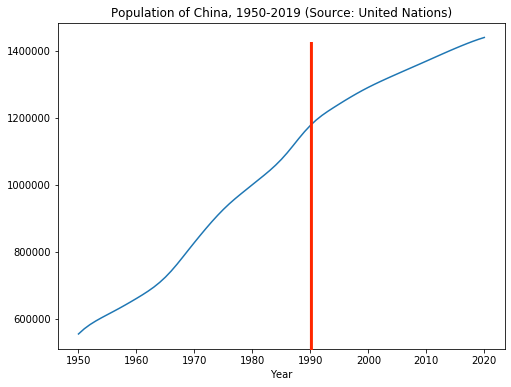
Structural break indications
- Visualization of trend may not indicate break point
- Alternative: examine volatility rather than trend
- Structural change often accompanied by greater uncertainty => volatility
- Allows richer models to be considered (e.g. stochastic volatility models)
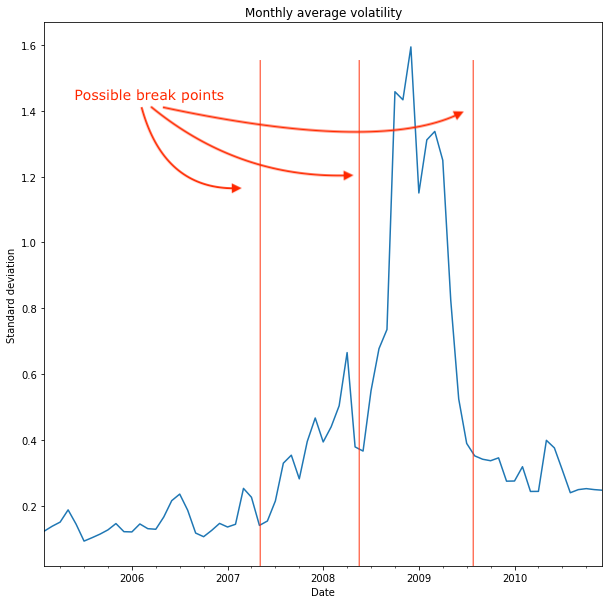
Rolling window volatility
- Rolling window: compute volatility over time and detect changes
Recall: 30-day rolling window
- Create rolling window from ".rolling()" method
- Compute the volatility of the rolling window (drop unavailable dates)
- Compute summary statistic of interest, e.g.
.mean(),.min(), etc.
rolling = portfolio_returns.rolling(30)volatility = rolling.std().dropna()vol_mean = volatility.resample("M").mean()
Rolling window volatility
- Visualize resulting volatility (variance or standard deviation)
import matplotlib.pyplot as plt
vol_mean.plot(
title="Monthly average volatility"
).set_ylabel("Standard deviation")
plt.show()
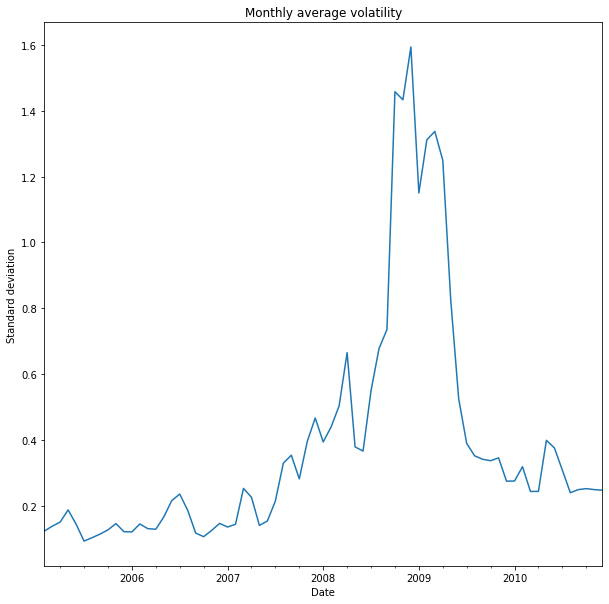
Rolling window volatility
- Visualize resulting volatility (variance or standard deviation)
- Large changes in volatility => possible structural break point(s)
- Use proposed break points in linear model of volatility
- Variant of Chow Test
- Guidance for applying e.g. ARCH, stochastic volatility models
vol_mean.pct_change().plot(
title="$\Delta$ average volatility"
).set_ylabel("% $\Delta$ stdev")
plt.show()
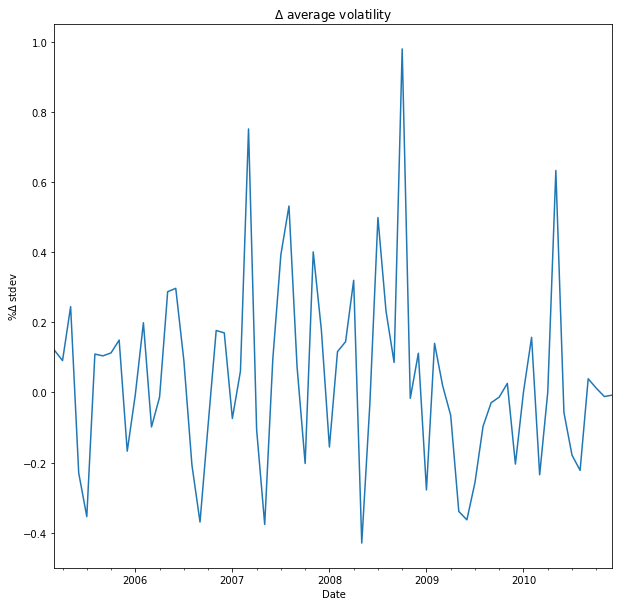
Extreme values
- VaR, CVaR: maximum loss, expected shortfall at particular confidence level
- Visualize changes in maximum loss by plotting VaR?
- Useful for large datasets
- Small datasets: not enough information
- Alternative: find losses exceeding some threshold
- Example: $\text{VaR}_{95}$ is maximum loss 95% of the time
- So 5% of the time, losses can be expected to exceed $\text{VaR}_{95}$
- Backtesting: use previous data ex-post to see how risk estimate performs
- Used extensively in enterprise risk management
Backtesting
- Suppose $\text{VaR}_{95} = 0.03$
- Losses exceeding 3% are then extreme values
- Backtesting: around 5% (100% - 95%) of previous losses should exceed 3%
- More than 5%: distribution with wider ("fatter") tails
- Less than 5%: distribution with narrower tails
- CVaR for backtesting: accounts for tail better than VaR
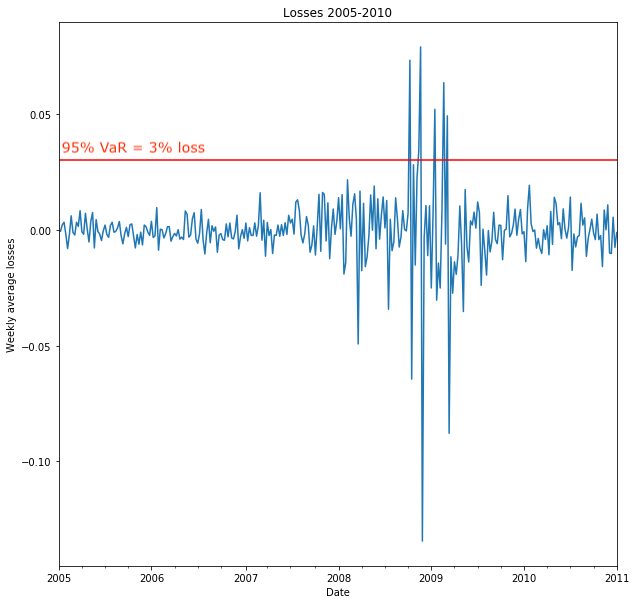
Let's practice!
Quantitative Risk Management in Python

